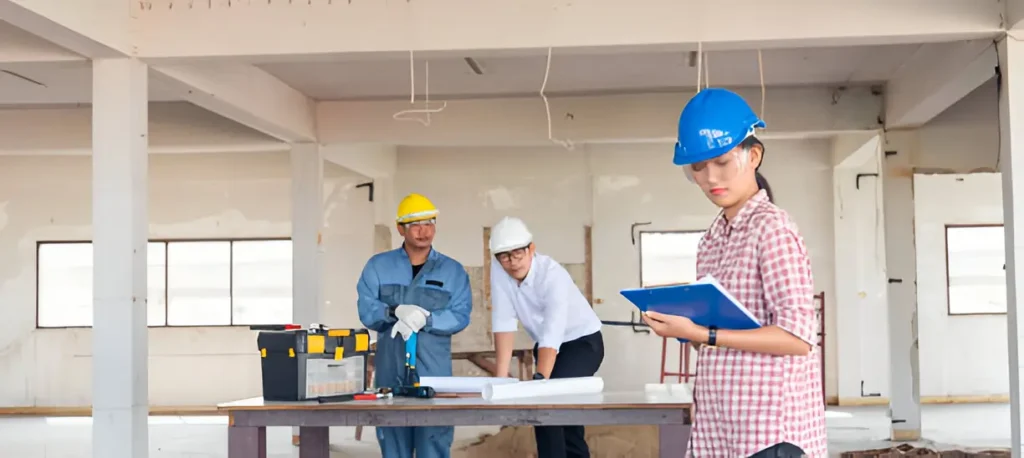Home improvement is an unending journey for homeowners looking to maintain or increase the value of their homes while creating a more comfortable and personalized living space. However, balancing the desire for a high-quality upgrade with the limitations of a budget can take time and effort. Savvy homeowners learn to seek out resources that marry quality with affordability. Starting with a clear plan and utilizing cost-effective strategies can make a significant difference in home renovation endeavors.
Smart Planning for Home Upgrades
Allocating financial resources wisely is vital when embarking on updating your abode. Methodical planning and cost assessment help devise a comprehensive budget that caters to necessary updates and vanity projects. It’s essential to strike a balance that improves the quality of life in your home while ensuring any upgrades can increase its market value. Establishments like The Home Depot are pivotal in offering vast materials and tools that cater to various budgets and project scopes. With meticulous preparation, you can outline a cost-effective plan for your renovations, prioritizing areas of the house that require immediate attention or promise a high return on investment. Avoiding impulse decisions and sticking to a well-thought-out budget safeguards your home upgrade investment.
DIY vs. Professional Help: Making the Right Choice
In-home improvements, the debate between DIY and professional involvement is perpetual. A DIY approach can be rewarding and cost-effective for straightforward tasks such as painting or minor repairs. It offers homeowners savings and the satisfaction of hands-on involvement in their property’s transformation. Conversely, complex renovations generally require the finesse and know-how of skilled tradespeople. Electrical work, plumbing, and structural changes are best left to professionals to ensure safety and compliance with regulations. Conduct due diligence in researching and vetting contractors, seeking quotes, and reading reviews. This groundwork is essential for finding a balance between affordability and proficiency.
Finding Deals and Discounts on Home Improvement Supplies
Home renovation costs can accumulate rapidly, making the hunt for deals and discounts prudent and often necessary for budget-conscious homeowners. Capitalizing on seasonal clearances, holiday promotions, and loyalty programs can substantially lower expenses. Establishments advise on optimal purchase time for tools and materials. By timing purchases to align with sales, you can obtain quality supplies at a fraction of the cost. Repurposing materials already available in your home or sourcing from second-hand shops can contribute to substantial savings.
Revamping Your Space with Minimal Investment
Not all changes need to be extensive or expensive to be effective. Smaller-scale projects can lead to significant improvements in the ambiance and functionality of a home. Simple but strategic alterations such as updating lampshades, re-grouting tiles, or installing floating shelves can modernize a space without a significant investment. Restoring or repurposing furniture adds charisma and character to your space, and when done effectively, these projects can make rooms feel new again at a minimal cost. Upcycling, a sustainable approach to home decor, is an economical and environmentally friendly practice that adds a personal touch to your interior design.
Energy Efficiency Upgrades That Save Money in the Long Run
Integrating energy efficiency into your home improvement plans can yield long-term financial benefits. While investments in energy-efficient appliances, windows, and insulation might command a higher price tag upfront, they can dramatically reduce monthly utility bills. Beyond the direct savings, such improvements can qualify homeowners for rebates and tax incentives, providing additional financial reprieve. Investigating the incentives available at both local and national levels facilitates making these advantageous upgrades more attainable and aligns financial planning with eco-conscious living.
Utilizing Technology to Assist in Home Renovations
Integrating technology into the planning and executing home improvements can streamline projects and enhance outcomes. A diverse range of apps and software options exist to assist in everything from designing layouts to calculating materials and managing budgets. Taking advantage of technology enables homeowners to visualize renovations before they begin, thus avoiding costly miscalculations. Similarly, the renovation needs to be supported by the Utility bidder as this will save p electricity consumption and ultimately lead to lower electricity bills. Accurate preliminary planning with these digital tools can save time and money, preventing project scope creep and ensuring resources are utilized efficiently.
Landscaping on a Dime: Elevating Your Outdoor Space
Making an enticing first impression of your home’s exterior doesn’t have to be a costly venture. Effective landscaping can be achieved through thoughtful planting and careful maintenance that keeps the bank intact. Planting perennial flowers and utilizing native plants reduces cost and care. At the same time, DIY landscaping projects such as building a simple path or installing a water feature add charm and character. The key to cost-effective landscaping is in the planning and execution—choosing projects that offer the maximum visual impact for minimal expenditure, then rolling up your sleeves to do the work yourself.
Decorating Hacks: High Style, Low Cost
The power of imagination comes to the forefront in the quest for elegant yet budget-friendly home decor. With the right approach, any homeowner can imbue their space with a luxurious feel without the price tag. Innovative decorating hacks, such as creative use of fabrics, accents, or lighting, can transform the ambiance of a room. Additionally, refreshing existing decor can be an effective strategy—consider reupholstering chairs, using decorative decals on plain walls, or switching out cabinet knobs for an easy yet impactful update. Inspiration can often be found in the unlikeliest places, presenting the opportunity to repurpose and rejuvenate with gusto.
Handling Unexpected Issues During Renovation
Regardless of meticulous planning and estimation, renovations can unravel unforeseen issues that derail progress and budgets. Setting aside a contingency fund—typically around 10-20% of the project budget—provides a financial cushion to absorb these surprises. This foresight allows you to address unexpected problems promptly, keeping your renovation on track and within a reasonable timeframe. It also reduces stress, knowing that you are financially prepared to manage any hiccups along the way. Ultimately, expecting the unexpected ensures that your home improvement process is more resilient and adaptable to change.
